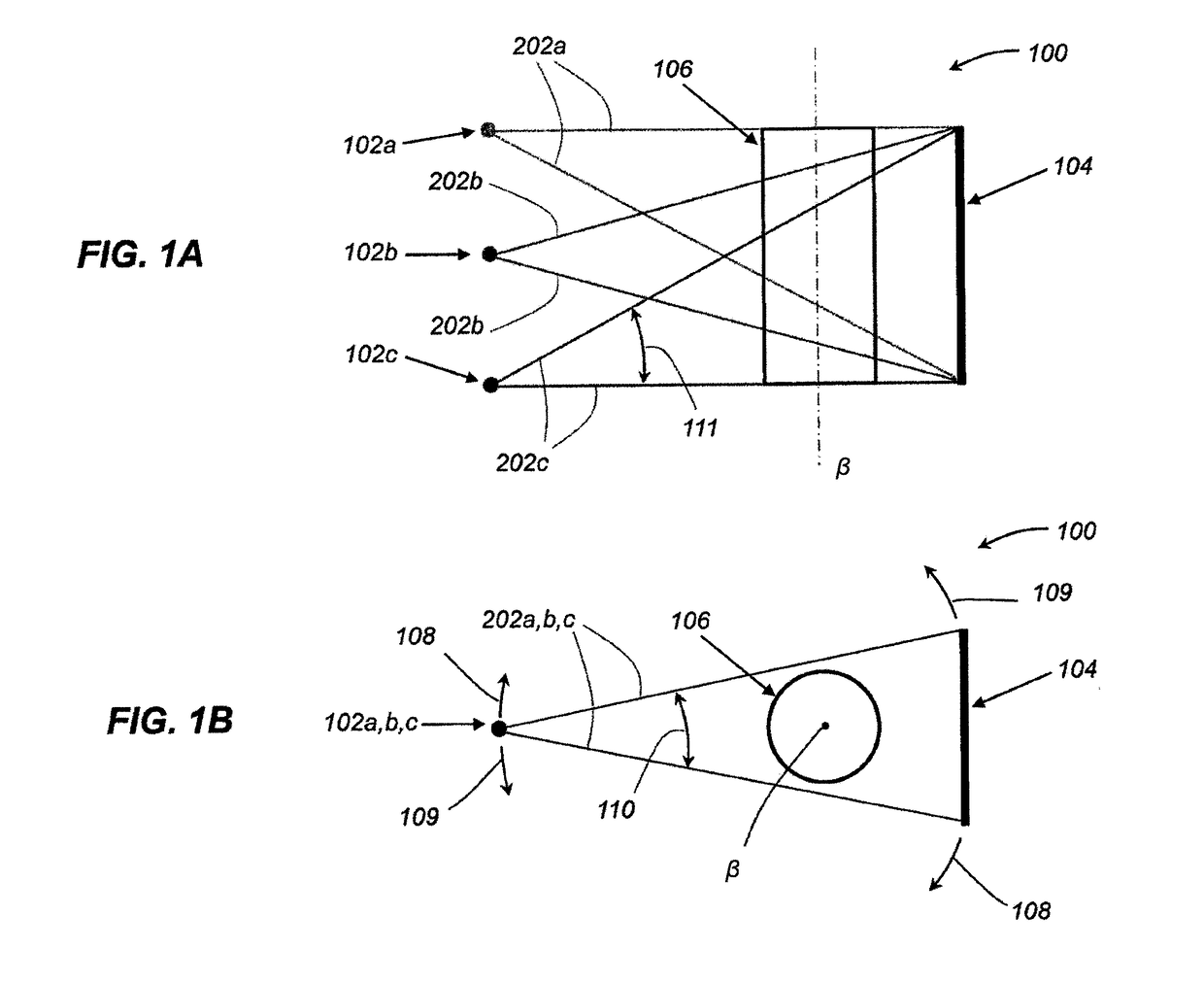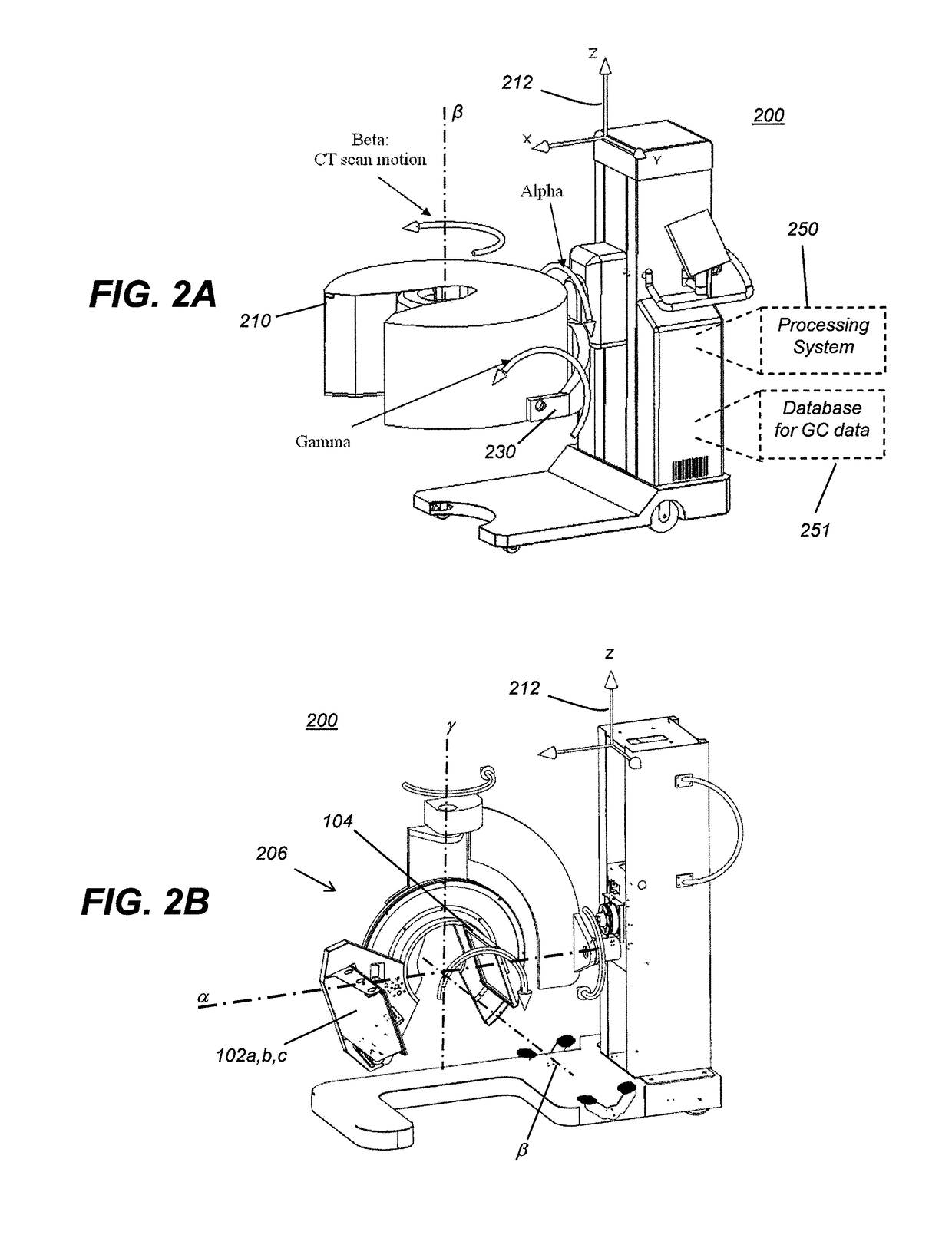Post acquisition calibration
a technology of tomographic imaging and calibration, applied in the field of post acquisition calibration, can solve the problems of poor image quality and inability to correct poor image quality, and achieve the effect of improving radiographic image quality, improving accuracy and quality of reconstructed volum
- Summary
- Abstract
- Description
- Claims
- Application Information
AI Technical Summary
Benefits of technology
Problems solved by technology
Method used
Image
Examples
Embodiment Construction
[0021]With reference to FIG. 1A there is illustrated a schematic diagram of a tomographic imaging system 100 comprising one or more radiographic energy (x-ray) sources 102a-c aimed at an object 106 to be radiographically imaged. A digital radiographic (DR) detector 104 is positioned in a known and predetermined geometric spatial relationship with the x-ray sources 102a-c wherein the object 106 to be imaged is positioned therebetween. In one embodiment, the x-ray sources 102a-c and the DR detector 104 may form a portion of a CBCT imaging system 200 (FIGS. 2A-C), whereby one or more of the x-ray sources 102a-c and the detector 104 are configured to revolve about an imaging axis β while capturing a plurality of digital projection (2-D) images of the object 106 in the detector 104, as is well known in the digital radiography arts. The captured images may be processed in, or transmitted by, the detector 104. If transmitted, the detector 104 may use wired or wireless transmission means to...
PUM
 Login to View More
Login to View More Abstract
Description
Claims
Application Information
 Login to View More
Login to View More - R&D
- Intellectual Property
- Life Sciences
- Materials
- Tech Scout
- Unparalleled Data Quality
- Higher Quality Content
- 60% Fewer Hallucinations
Browse by: Latest US Patents, China's latest patents, Technical Efficacy Thesaurus, Application Domain, Technology Topic, Popular Technical Reports.
© 2025 PatSnap. All rights reserved.Legal|Privacy policy|Modern Slavery Act Transparency Statement|Sitemap|About US| Contact US: help@patsnap.com



